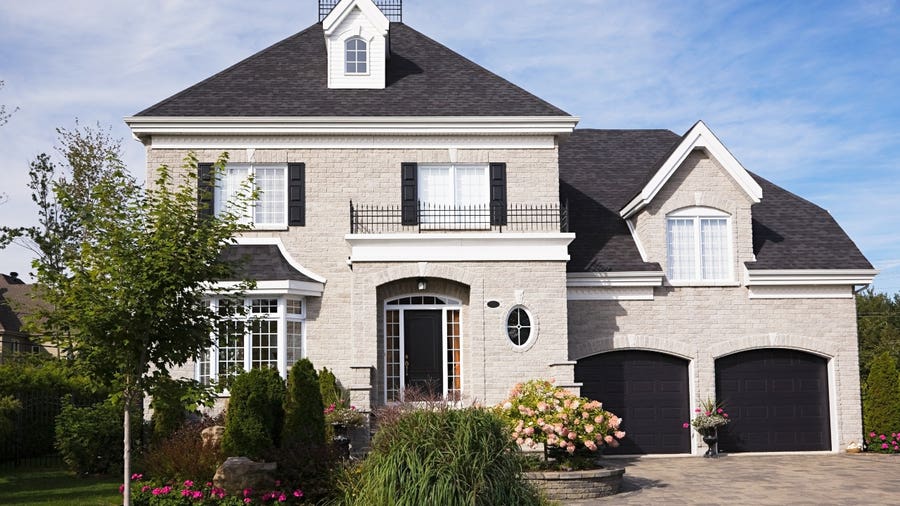What is mortgage insurance?
Mortgage insurance is an insurance policy that protects the mortgage lender and is paid for by the borrower of the loan.
Usually, when you purchase an insurance plan, it is to provide coverage for you. Mortgage insurance, however, provides coverage for your lender. With mortgage insurance, the lender or titleholder is covered in case you are unable to pay back the mortgage for any reason. This can include defaulting on payments, failing to meet contractual obligations, passing away or any other number of situations that prevent the mortgage from being completely repaid.
How mortgage insurance works
In general, you need to pay for mortgage insurance if you put down less than 20 percent on a home purchase. This is because you have less invested in the home upfront, so the lender has taken on more risk giving you a mortgage. How much you’ll pay depends on the type of loan you have and other factors.
Even with mortgage insurance, you are still responsible for the loan, and if you fall behind on or stop making payments, you could lose your home to foreclosure.
PMI vs. MIP and other fees
PMI
PMI, or private mortgage insurance, is typically required if you’re obtaining a conventional loan with less than 20 percent down. This can include a 3-percent or 5-percent conventional loan or other type of low-down payment mortgage. Most borrowers pay PMI with their monthly mortgage payment. The cost can vary based on your credit score, loan-to-value (LTV) ratio and other factors.
MIP
MIP is the mortgage insurance premium required for an FHA Loan with less than 20 percent down. You’ll pay for this mortgage insurance upfront at closing, and also annually. The upfront MIP equals 1.75 percent of your mortgage, while the annual MIP ranges from 0.45 percent to 1.05 percent of your mortgage based on the amount you borrowed, LTV ratio and the length of the loan term.
USDA guarantee fee
The USDA guarantee fee is one of the costs you’ll pay to obtain a USDA Loan, which is available to borrowers in designated rural areas and has no down payment requirement. The guarantee fee is paid upfront and annually, with the upfront fee equal to 1 percent of the loan and the annual fee equal to 0.35 percent.
VA funding fee
VA loans also have no down payment requirement, but are available exclusively to servicemembers, veterans and surviving spouses. While there is no mortgage insurance required for these loans, there is a funding fee that ranges from 1.4 percent to 3.6 percent of the loan, depending on whether you’re making a down payment (and the size of it, if so) and if this is your first time obtaining a VA loan. This funding fee doesn’t have to be paid in some circumstances.
Pros and cons of mortgage insurance
While mortgage insurance primarily benefits the lender, it does serve a purpose for the borrower because it allows you to get a mortgage with limited down payment savings. Putting down 20 percent can be challenging, especially with home values on the rise, so by paying for mortgage insurance, you can still get a loan without needing a large down payment.
Waiting until you have a 20 percent down payment also runs the risk of missing out on favorable mortgage rates. Mortgage insurance offers the ability to get those rates now, meaning you can save on interest over time, despite borrowing more money with a smaller down payment at first.
However, there are downsides to mortgage insurance, as well, mainly that it’s an extra expense you wouldn’t otherwise have to pay, and that it can be difficult to get out of if you have an FHA loan.
How to get rid of mortgage insurance
If you have a conventional loan, you can get rid of mortgage insurance simply by paying down your loan. Under the Homeowners Protection Act, lenders are required to cancel your mortgage insurance once your balance reaches 78 percent of the original purchase price or once you reach the halfway point of your amortization schedule (so after 15 years of a 30-year mortgage, for example).
You can also request cancellation before the automatic removal once your balance reaches 80 percent of the original value. Some lenders are receptive to this if you are in good standing with your payments.
Lastly, you can try to refinance your mortgage in order to get out of the mortgage insurance, or get your home reappraised to see if it has gained value and the LTV ratio improves. In general, these strategies can work if your home has appreciated significantly since you first took out your mortgage.







